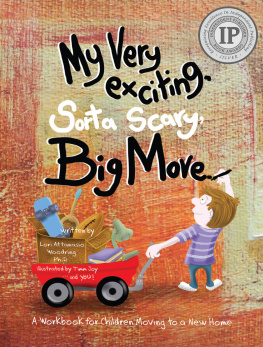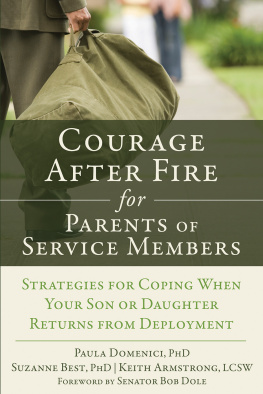

Published by Redleaf Press
10 Yorkton Court
St. Paul, MN 55117
www.redleafpress.org
2009 by Karen Petty
All rights reserved. Unless otherwise noted on a specific page, no portion of this publication may be reproduced or transmitted in any form or by any means, electronic or mechanical, including photocopying, recording, or capturing on any information storage and retrieval system, without permission in writing from the publisher, except by a reviewer, who may quote brief passages in a critical article or review to be printed in a magazine or newspaper, or electronically transmitted on radio, television, or the Internet.
The author and Redleaf Press have made every effort to trace and contact the copyright holders of all materials reprinted in this book. If there are any inadvertent omissions, we apologize to those concerned and ask that they contact Redleaf Press at so that we can correct any oversight as soon as possible.
First edition 2009
Cover design by Percolator and Jon Letness
Interior design by Mayfly Design
Typeset in Adobe Caslon
Developmental edit by Cathy Broberg
Library of Congress Cataloging-in-Publication Data
Petty, Karen.
Deployment : strategies for working with kids in military families / Karen Petty.
p. cm.
Includes bibliographical references.
ISBN 978-1-60554-057-3 (e-book)
1. Children of military personnelCareUnited States. 2. Deployment (Strategy) I. Title.
UB403.P387 2009
355.1'29dc22
2008039423
To military children everywhere, whose bravery and spirit are a constant source of inspiration to me. And to those who care for them and those who serve and care for our countryyou are my heroes.
DEPLOYMENT
Much thanks to those who inspired me to write this book. Your work with military children is to be commended. Thanks especially to Kyra Ostendorf and David Heath at Redleaf Press for believing in this book and the need to provide strategies for those who work with and on behalf of military children. Your constant encouragement and guidance through the writing process brought affirmation to my passion for military children and their providers.

My dad served in the Navy during World War II on the island of Okinawa, Japan, before I was born. My whole life, Ive listened to stories about Okinawa, but only recently was I able to visit a U.S. installation there. During my visit, I tried to envision some of the stories he had told, tried to make them come to life, but it was too far in the past. My friends Barbara and Louis took me to shops where beautiful silk kimonos brightened the windows. The island was too peaceful and too full of wonderful things to see and do for me to imagine what it was like during the war.
Although I missed being a military kid by a few years, my heart has always been with kids whose parents serve in the military and who are separated from them during times of .

I didnt know it when I started my career, but all along I was taking steps to help military families and children. After working as a teacher and caregiver of children for over twenty years, I became a college professor. I taught social-emotional development to students who would one day be advocates for and teachers of children, using my practice and experience to inform my teaching. I then had the good fortune to become a consultant and curriculum writer for military-based programs and was able to visit many installations around the world to see a side of the military child that I had not seen as a classroom teacher. I earned a doctoral degree in curriculum and instruction from Texas A&M University, with emphases in early childhood education and child development. This experience and preparation have given me respect and passion for the thousands of children with military parents and the challenges they face.
One-half of all military personnel are married with children. Almost a half million children under the age of eight live in military families in which one or both parents are deployed (www.military.com). In no other situation are children placed on such high alert for a parents impending danger and faced with the kinds of stress that living the life of a military kid brings. Transitions that arise when parents and family members face assignment or reassignment and when family relocation separates children from loved ones or moves them into new schools and communities bring challenges and change. Its important not to overlook the unique stressors involved when working with military families. This book provides support and strategies for teachers, caregivers, trainers, and advocates working with military children.
Although this book is written specifically about the challenges children face related to deployment, the coping strategies it outlines will be helpful when working with other children as well. Whenever a parent leaves home for an extended periodwhether he is working on temporary duty (TDY) that takes him away from home or he is working in another countrychildren experience a sense of loss. Of course, not every parent in the military goes to war or even leaves home. Jobs in the community as recruiters and positions on military installations that keep parents close by are common. Much of the information in this book will still be helpful to caregivers in these situations.
If you are a family child care provider, a family member or friend of the family, or a center care provider, know that providing care for the military child is one of the most important jobs you will ever have. This book will help you to provide quality and nurturing care. If you care for military children with special needs, I recommend Including One, Including All (Wanerman, Roffman, and Britton 2010).
Deployment: Strategies for Working with Kids in Military Families is written for those who work with or on behalf of children whose parents serve in the U.S. militaryArmy, U.S. Marine Corps, Navy, Air Force, National Guard, and Reserves. You may be teaching or caring for military kids on an installation or off, in Department of Defense Schools, public schools, private schools or home schools, or family child care or center-based child care, or you may be their grandparent or other family member or friend. Social workers, program directors, trainers, and principals can all gain a better sense of the military child by reading this book and thoughtfully reflecting on their programs and the principles that inform or guide their decision making about the military child.
For the purposes of this book, military child is defined as one whose parent is serving either in the active-duty forces or in an activated and mobilized National Guard or Reserve unit. The age span for the military child in our discussion includes infants through school-age children. In this book, the term primary caregiver refers to the adult who is responsible for the child while the parent or parents are away on military duties. Primary caregivers are often the first point of contact and consultation for children when their parents are deployed. They provide care for the child when out of center or school care. A primary caregiver can be the other parent, a relative, or a close friend of the parents. The terms
Next page








